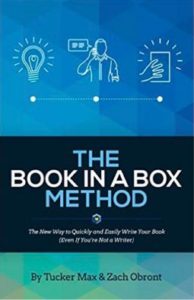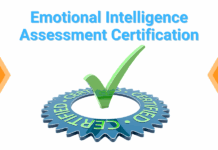
I truly believe almost everyone in business should write a book. In fact, I wrote and published a book to launch each of my last three companies.
Are you a consultant? You should write a book to gain clients and speaking gigs.
CEO of a big company? Write a book to document your corporate history and to build your legacy.
College graduate? Write a book to stand out from the other thousand candidates who are applying for the same job.
But writing a book and publishing a book can be difficult. I’ve written several, but I still tell people that I don’t like writing books; I like having them written.
And even if you do have the time and skill to put words on a page, how do you find an agent? How do you get publishers interested? If you want to go the indie route, how do you find editors, cover designers and get your book listed on Amazon and all the right websites?
It is because of this conundrum— being an author has huge benefits but is really hard to accomplish —that I became especially interested in a new book and solution called The Book In A Box. It’s a company founded by Zach Obront and Tucker Max. (If that last name sounds familiar, yes, it’s that Tucker Max.)
They charge a flat fee of $20,000 for their writing and publishing services (which includes cover design, interior layout, distribution through all major channels and even limited marketing support). While this fee may seem like a lot, professional business ghost writers routinely quote $50,000 to $80,000 for writing services alone. Max and Obront developed a process that allows you to get your ideas into a book—in your words and even your voice—and it just takes you talking to them on the phone for about 15-20 hours, spread over 6 months. The process is centered on conversational interviewing, and they’ve already helped more than two hundred entrepreneurs, C-level executives, and other professionals write their books using this process.
Cleverly, Obront and Max actually wrote their own book about the Book In A Box method. This is an excellent book you can buy online or download free from their website that explains the exact process they use. And they freely admit that you could always try this process on your own without their help. They break down their methodology into five key steps:
1. What is the real focus of your book?
For books to be effective, they need to be focused, so the first thing you need to do is to refine your ideas into a clear book topic. Consider:
• Why are you writing the book?
• Who is the audience for the book?
• Why is your book idea going to appeal to them?
People won’t read a book if it doesn’t help them in some clear way, so these questions are designed to help pinpoint exactly how a set of ideas can add value or solve a problem for an audience. The answers to these questions become the foundation, or the position, of the book.
2. What does your reader need to know?
Once a clear, high-level book position is established, it is used to create an outline for the actual content of the book itself. Book In A Box has a unique method for outlining books with their clients: they create an outline by simulating a conversation between the book’s target audience and the author.
Imagine you’re sitting with your target audience, and they ask you: “Yes, I’m interested in your book topic because you know how to solve my problem and get me what I want–so what do I do? Explain it to me in detail.” How would you walk them through it? Each major step in the process should be one chapter in the book, and it should cover everything in a way that actually helps a novice reader understand and implement the concepts. This typically leaves an outline of about 5-10 pages.
3. Talk about what you already know.
The next step is to “write” the book, but not by sitting down at a keyboard and typing the words out by hand. Using the book outline as a guide, talk through all your ideas as if you were explaining them to your target audience–which you are. Book In A Box literally has conversations between the author and one of their editors during this process, which allows for clarifying questions and ensures that each concept is fully explained.
4. Translate your spoken words into book prose.
Since spoken language is different from written language, the next step is editing the conversation transcripts from spoken word into book prose. This part is almost like writing, but it’s much easier than starting from scratch. All the thoughts, ideas, and even the phrasing are already there, so Book In A Box is able to take the raw conversation data and basically translate it into book prose. Organize the transcriptions by chapter, and translate each section into words that flow on a page. This step leaves a good rough draft to work from during the editing process.
5. Now, make it smooth by reading it out loud.
Much like the writing process, Book In A Box’s editing method involves reading the book out loud also with another person. Reading the manuscript out loud magnifies anything that sounds unnatural, doesn’t make sense, or muddles the clarity of a concept, which makes the editing process much more efficient.
Once the verbal editing process is finished, the book is ready for a traditional edit, which simply involves reading through the manuscript one sentence at a time to clean up any last errors. After that, the book is ready for publishing.
If you’re a professional author, and you’re used to translating your thoughts directly from your brain to a piece of paper, Book In A Box’s method probably isn’t for you. But if you’re a person with great ideas, and you find writing unnatural or time-consuming, like it is for most people, it might be a good idea to look into their process for yourself. All the steps are explained in detail in The Book In A Box Method.
–
Kevin Kruse is the author of 15 Secrets Successful People Know About Time Management and “The Millionaire Day Planner: A Free 1-Page Planning Tool.”
Photo: Amazon.com/Tucker Max and Zach Obront





